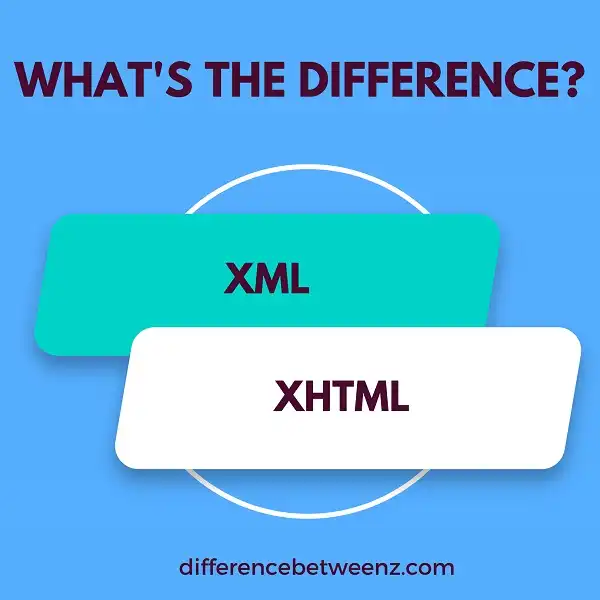Do you know the difference between XML and XHTML? Many people don’t, but understanding the difference is important if you want to create well-formed documents. In this blog post, we’ll explore the differences between XML and XHTML, and explain why knowing the differences is important. Stay tuned!
What is XML?
XML, which stands for Extensible Markup Language, is a markup language that is used for storing and transporting data. XML is similar to HTML in that it uses tags to identify elements, but XML tags are not predefined like HTML tags are. This means that XML can be used to create custom tags, which makes it more flexible than HTML. XML is also designed to be self-descriptive, which means that it can be read and understood by both humans and computers. XML is often used in conjunction with other technologies, such as Java and JavaScript, to create web applications.
What is XHTML?
XHTML is a markup language that combines the features of HTML and XML. It is typically used to format web pages and applications and can be read by most web browsers. XHTML code must be well-formed, meaning that it must adhere to certain syntax rules. This can make XHTML more difficult to write than HTML, but it also makes XHTML pages more consistently readable by computers and other devices. XHTML also supports many of the same features as HTML, including text formatting, images, and hyperlinks. As a result, XHTML is often seen as a more “semantic” alternative to HTML.
Difference between XML and XHTML
XML and XHTML are two markup languages that are often used for web development. XML is a flexible language that can be used to create a wide variety of document types. XML documents are made up of tags that define the structure of the document.
In contrast, XHTML is a more rigid language that is based on XML but includes additional rules that make it suitable for use as a web page. Both XML and XHTML can be used to create web pages, but XML provides more flexibility when it comes to design choices.
Conclusion
While XML and XHTML are both markup languages, they differ in their purpose and how they are used. XML is a data-only language that helps to structure and organize information, while XHTML is designed for displaying information on the web. When creating a website, it is important to decide which markup language you will use and make sure all of your pages are formatted correctly.


